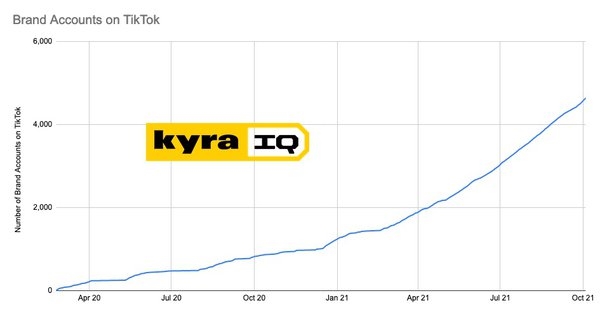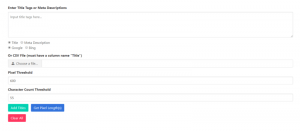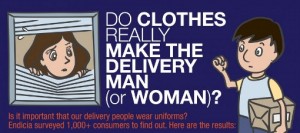The Homogenization Of Brands On TikTok
Over the last 18 months, we’ve witnessed TikTok grow from an awkward spotty teenager into a well-groomed socialite that everybody wants to be friends with.
And by everybody, I predominantly mean advertisers.
In the early days of TikTok advertising, there were a few front-runners — the brave ones that jumped in head-first and reaped the rewards of their creative risk-taking: e.l.f. Cosmetics transformed its business through its “Eyes.Lips.Famous.” campaign; and Chipotle became a viral hit machine, racking up millions of followers as others watched from the bleachers with their jaws on the floor.
Soon enough, every marketer and their dog scrambled to get involved. Within 18 months the number of Brand Accounts on TikTok increased by 1100%:

Some brands hired interns to run their channels for them, others paid for influencer-led content, and then there were those that repurposed their existing Instagram and YouTube content (of course this tactic failed miserably).
Today, brands are starting to get the hang of it, but most are still bumbling around wondering what “no cap” means. Some have established a following and are even getting some views and engagement, but when it comes to content strategy, there is a strange new trend starting to emerge: They are all doing the same thing.
At first it was fun and exciting. Brands irreverently pounced on TikTok’s viral trends in a reactive, almost careless way that had legal teams across Madison Avenue hanging onto the edge of their seats. For a split second it felt like marketers had truly managed to “get down with the kids.”
But what was a brief moment of exciting innovation became quickly overdone and tedious as every brand, regardless of their industry, legacy or target audience, started to jump in and copy what has unofficially become the rule book for brands on TikTok.
Top offenses include:
- Creating trend-based TikToks that have absolutely zero relationship to your brand, product or services.
- Animating your product or brand with some eyes and a mouth to clunkily crowbar your business offering into a hot new trend.
- Forced POV videos that go something like “POV: You are our product.”
- Paying an influencer to dance with your product.
We get it: You want followers. But that doesn’t mean you can just throw decades of golden marketing principles out the window.
It’s still important to tell us your Product Benefit, give us a Reason To Believe, and don’t be shy — we’ll even listen to a Call To Action if it’s compelling enough.
So, what’s a brand to do?
If you’re a food company, use TikTok to show me how tasty your food looks.
If you’re an aviation company, let me see your new planes or amazing customer service.
If you’re a clothing brand, show me how cool your clothes are and why someone like me would want to buy them.
In a nutshell, don’t lose sight of the end goal here, marketers! TikTok is a ferociously powerful tool. Let’s just start using it properly!
(36)
Report Post




